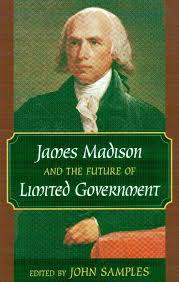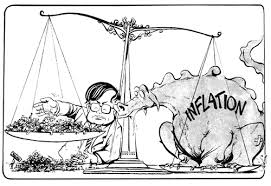Following is an article by J. D. Foster, Ph.D., who is the Norman B. Ture Senior Fellow in the Economics of Fiscal Policy in the Thomas A. Roe Institute for Economic Policy Studies at The Heritage Foundation (http://www.heritage.org/).
 J.D. Foster, Ph.D., The Heritage Foundation
J.D. Foster, Ph.D., The Heritage Foundation
Foster’s article addresses the anticipated impact of further government spending (i.e., fiscal stimulus) upon the U.S. economy, in the short run and beyond. Foster provides a counter-argument to the recommendations and justifications of Economist Paul Krugman for further government spending. The crux of the article is that the most healthy approach to helping the U.S. economy to recover from the current recession is not by increased fiscal stimulus, but rather by reducing taxes at all levels of the economy to encourage growth in private, nongovernment business.
Following are some noteworthy selections from the complete article (here). (Bold, italicized, and underlined text are provided by myself to draw attention to key thoughts in Foster’s article.)
************
“Growth, Deficits, and the Future”
by J.D. Foster, Ph.D., The Heritage Foundation
WebMemo #2150, December 3, 2008
—
Paul Krugman, in his article in The New York Times on December 1, “Deficits and the Future,” discusses deficit spending reflecting both the weakening state of the economy and his response to the changed political climate in Washington, D.C. Krugman tells a good story, but in calling for even more spending he misses the punch line badly. Tax rate reduction, not another dose of deficit spending, is the key to a stronger economy.
Globally, and certainly in the United States, an intense debate is underway as to the proper magnitude of fiscal stimulus programs to “jumpstart,” “jolt,” or otherwise stimulate national economies as the global economy slides into a deep contraction. For some, a big boost to government spending is the natural solution, especially since they can identify so many “unmet needs” awaiting federal largesse. Neither desperation nor opportunism justifies ineffective and misguided action. These troubled times demand policies that work.
Fiscal Stimulus That Works
The global economic downturn looks to be quite deep. Even optimists do not foresee the recession that began in the United States at the end of 2007 to end until the second half of 2009. Naturally, the focus is on a government response, as though all solutions come from Washington. And, naturally, the response from Washington is to do what Washington excels at: spending money.
……
Suppose for a moment that the fiscal stimulus is effective in pumping up aggregate demand. The budget deficits under current policy for 2009 through 2011 are already around $1 trillion for each year, not counting the budget effects of the various financial bailouts. Put those figures in perspective: In dollar terms, the largest federal budget deficit ever was recorded in 2004 at $413 billion. As a percent of the economy, the largest was 6 percent in 1983. Even before any new policies, the deficit in 2009 is already an astonishing 8 percent of gross domestic product or more. If deficit spending stimulates the economy, then a $1 trillion deficit should suffice to launch a rapid expansion. If $1 trillion is not enough to end the recession, then another $500 billion in deficit spending surely will not do any better.
No Downsides to Deficit Spending?
… The (often wrong) conventional wisdom is that Congress will pass a fiscal stimulus plan of a half trillion dollars or more early in 2009, including some mixture of extended unemployment insurance benefits, food stamp spending, relief to the states, highway spending, and whatever other ingredients can be tossed into the fiscal goulash.
Krugman argues that there can be none of the traditional crowding out of private investment when government increases its borrowing (driving the deficit up from a trillion dollars). There may be none of the traditional downsides, but there are none of the promised upsides, either. The simple fact is that when government borrows a dollar, either the dollar was borrowed at home (reducing domestic consumption or investment) or it was borrowed from abroad, thereby increasing the trade deficit. Either way, the increase in aggregate demand from government spending is matched by a reduction in aggregate demand from the private sector.
Investing for the Future
The economy is weak and weakening, so prudent, effective fiscal stimulus is certainly called for. But that does not mean increased spending. At a minimum, it means making the tax relief enacted in 2001 and 2003 permanent–especially the reductions in individual income tax rates, the reduction in the dividends tax rate, and the reduction in the capital gains tax rate. Threatening rate increases is no way to stimulate an economy, as Krugman notes in his editorial. …
Keeping current tax policy is not stimulus; it is the elimination of a threat. True stimulus means cutting individual and corporate tax rates to encourage entrepreneurs to start new businesses and existing businesses to invest more. The economy is certainly weak today, but business startups and investment are about the future. Current economic troubles will pass and the economy will regain its strength. Lower tax rates will encourage businesses to prepare better now for future growth and in so doing will bring about a future of stronger economic growth. An effective fiscal stimulus means cutting tax rates—not because of the resulting higher deficits but because tax rate cuts improve the incentives for workers, investors, and producers to do more, thus stimulating the economy.
The Grand Teton Mountains, Wyoming, USA (www.ohranger.com)















